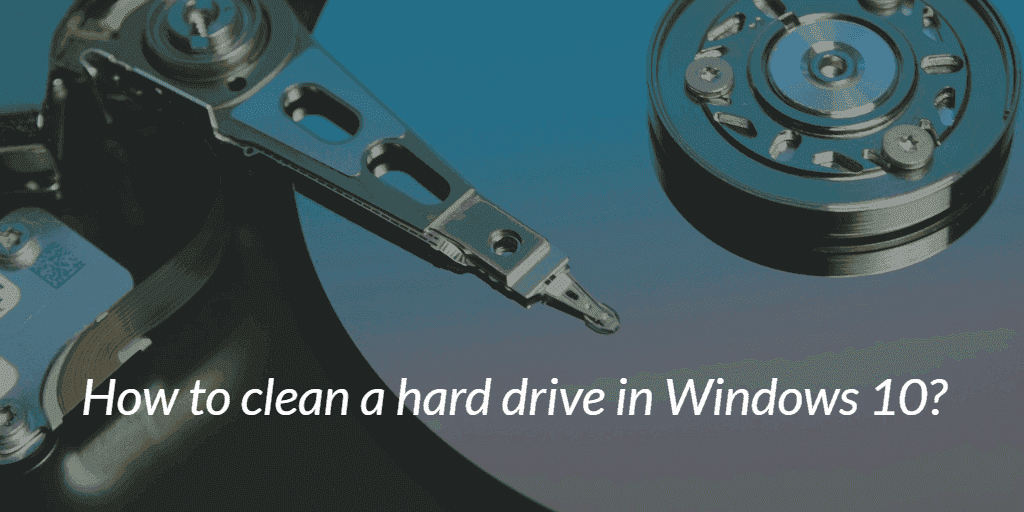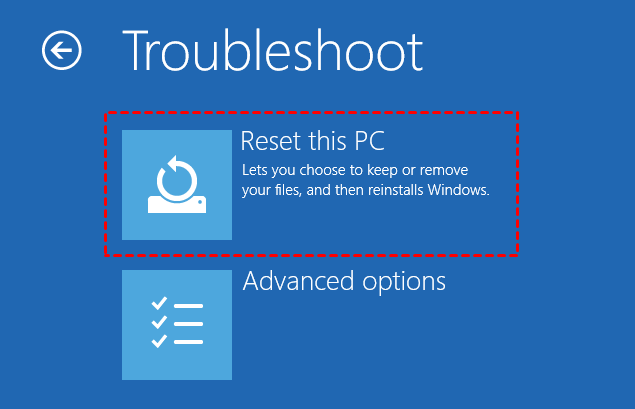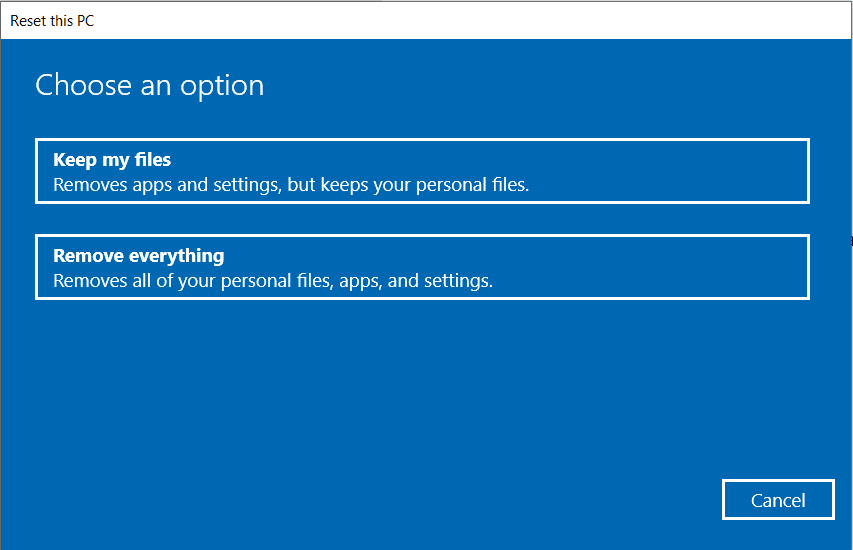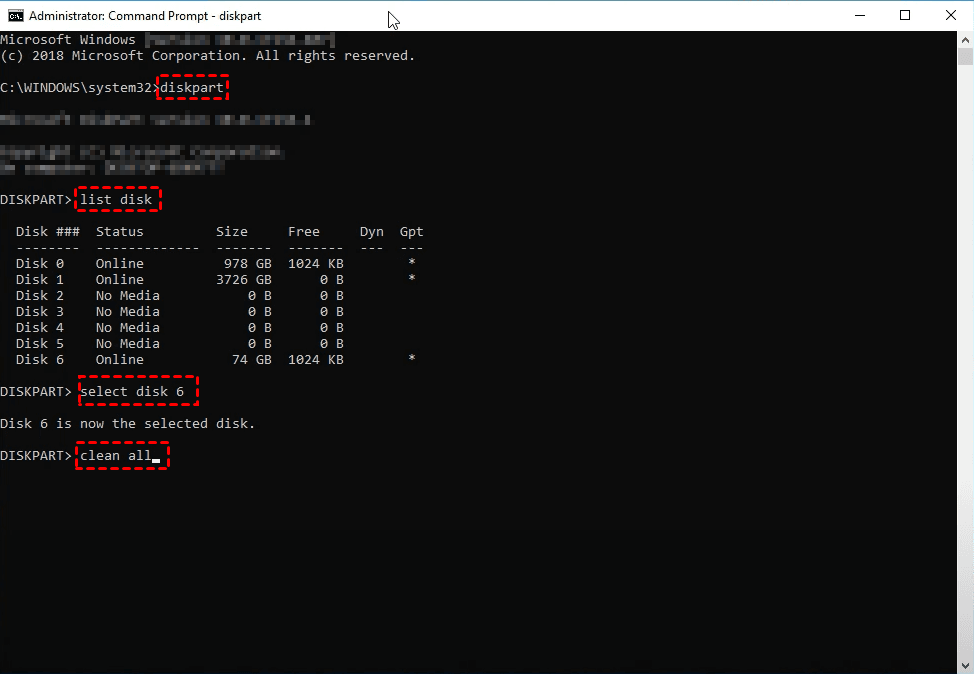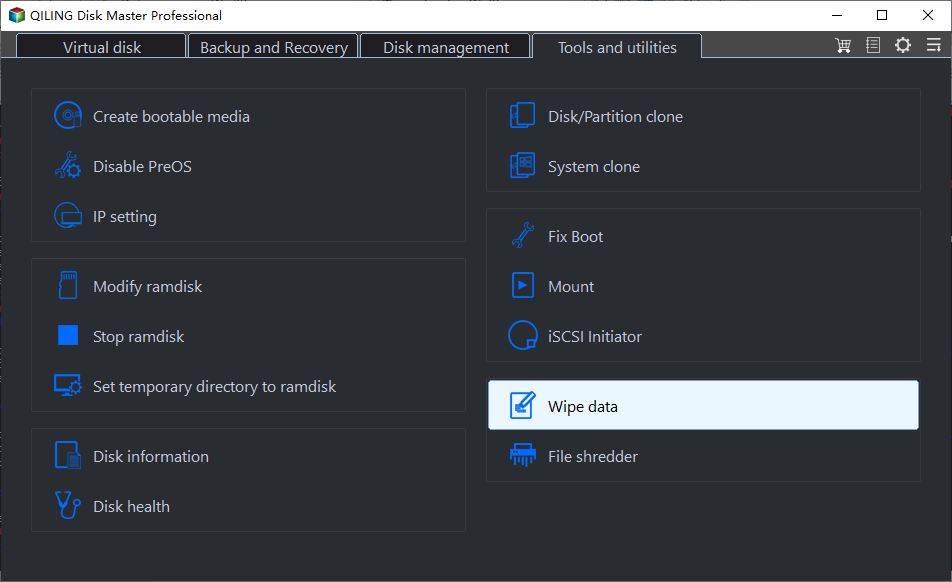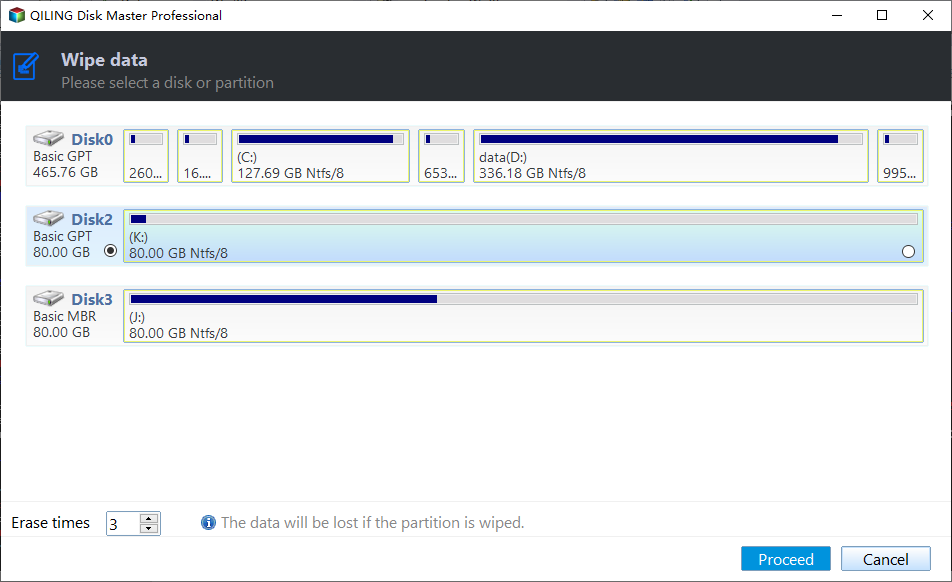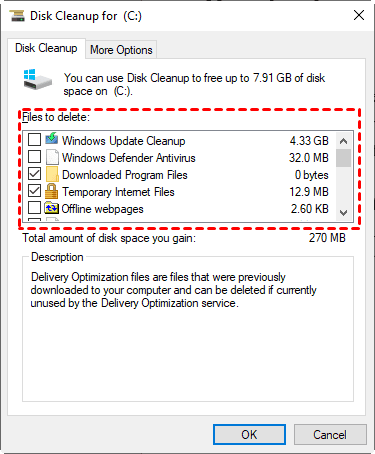How to Wipe or Clean a Hard Drive in Windows 10 Securely
2 scenarios to clean a hard drive in Windows 10
There are two common contexts for hard drive cleaning in Windows 10. You can refer to the following and click on the anchor text to jump to the corresponding solutions.
▶ 1 Completely clean a hard drive
It equals to wipe a hard drive, or permanently delete everything off the hard drive. This demand usually arises when you want to discard, sell a device, or use a second-hand disk without worry. And since it cannot be done by manual deletion, you need to take some powerful disk wipe initiatives.
▶ 2 Clean up a hard drive and free up disk space
If your computer is running out of space, you can hardly use it smoothly or even fail to perform ordinary operations. In this case, you could perform disk cleanup to speed up the computer.
How to completely wipe a hard drive in Windows 10
If you are trying to clean a hard drive completely and make the data unrecoverable, manual deletion is not a secure way. Because when you delete a file or a folder from the hard drive, it’s just marked as deleted, not fully erased. You can still retrieve it by recovery tools until the data is actually overwritten.
Therefore, I’d like to provide 4 secure ways. They are mostly based on zero-filling, which implements disk wipe by writing zeros to hard drive. Thus the erased data can hardly be recovered and your sensitive info will stay safe.
Please note:
- Be sure to backup anything you don’t want to lose on the hard drive, they will be deleted permanently after cleaning. You can backup files to external hard drive for better safety and portability.
- It’s better not to use these clean methods on SSD, because having each sector written over to 0 may cause an SSD to reduce life span faster.
- Method 1. Format a non-system drive or USB drive
- Method 2. Reset PC to wipe everything off a hard drive
- Method 3. Use DiskPart command to clean a hard drive completely
- Method 4. Use disk wipe tool to clean a hard drive more securely
Method 1. Format a non-system drive or USB drive
For a non-system local drive (like D:\, E:\) or a USB drive, you can easily format it to erase all the data safely. This can be done both in File Explorer and Disk Management, I’ll introduce the former as an example.
Caution:
This method applies to non-system drives. If you want to clean C drive in Windows 10 or wipe the entire hard drive, please move to the next method.
1. Right-click the drive you want to clean in File Explorer, choose Format.
2. Select a File system and uncheck the Quick Format option (or Perform a quick format in Disk Management), because it will make the data easy to recover.
3. Click Start to format the drive, it will erase all the data and fill sectors with zero.
Method 2. Reset PC to wipe everything off a hard drive
If you intend to erase a hard drive containing Windows 10 operation system, Reset this PC can be a straightforward solution. It enables you to remove all your personal files, apps and settings, which is also based on zero-filling.
1. Get access to Reset this PC in Windows 10:
☛ Inside Windows: Start > Settings > Update & Security > Recovery > Reset this PC > Get started.
☛ From boot: Insert an installation disc or bootable drive to enter Windows 10 recovery mode > select language and region in Windows Setup > Next > Repair your computer > Troubleshot > Reset this PC.
2. Choose Removing everything and follow the wizard to perform resetting.
Note:
- When it’s finished, your computer will be restarted and all your data has been wiped. You can either proceed to set up Windows, or stop here to discard the hard drive completely.
- If you have problem using this features, please refer to Windows 10 reset failed.
Method 3. Use DiskPart command to clean a hard drive completely
Among the few methods that can directly clean a hard drive in Windows 10, DiskPart is a convenient one. It allows you to erase all the MBR or GPT partitions, even the system-related partitions on the disk.
Caution:
♦ This process will completely wipe a hard drive in Windows 10 leaving it unallocated and not initialized. So if you want to clean your current system disk, please use Command Prompt from advanced startup options.
♦ The “clean all” command may take quite some time to complete, depending on the size of your data.
1. In Windows, Search for “CMD” on task bar and run Command Prompt as administrator. Optionally, you can use a bootable drive to enter Windows recovery environment and access Command Prompt from boot.
2. Type following commands and press Enter after each line.
Diskpart
List disk
Sel disk x
Clean all
*Replace x with the number of the disk you want to clean.
Method 4. Use disk wipe tool to clean a hard drive safely and easily
One of the difficulties with disk wiping is that it involves a lot of data, which can be disastrous if you do it incorrectly. And because of the limitations of Windows, you can only wipe an entire hard drive at once, or clean individual partitions one by one.
To save you from all the trouble, Qiling Disk Master Professional is an effective solution on all Windows PCs.
◑ It integrates data backup & restore feature to protect important data, and practical tool to wipe hard drive. You are allowed to clean select partition (s), or an entire HDD/USB drive.
◑ All the methods above prevent your data from being recovered by zero filling, which is indeed superior to manual deletion, but not the safest way. With Professional edition of Qiling Disk Master, you’ll be able to clean sensitive information with much safer wiping methods like DoD 5220.22-M or Gutmann.
You can download this software to have a try:
How to clean a hard drive in Windows 11/10/8/7 securely:
1. Install and open this tool. Backup important files if necessary, then navigate to Tools tab and choose Disk Wipe.
2. Choose a Wiping Type to determine what to clean, select Wipe disk here and click Next to proceed.
3. Select the hard drive you want to clean. Click Next to continue.
4. Choose a Wiping Method with the safety level and speed you want, hit Proceed to wipe the hard drive.
Note:
- This feature doesn’t support dynamic disks wiping currently.
- Safer wiping methods come with more passes and lower wiping speed.
- For your current system disk, the wiping operation will be executed in reboot mode, and you won’t be able to enter the system after completion.
How to clean up hard drive in Windows 10 to free up disk space
Sometimes your PC is running slow due to lack of free space, then you probably want to clean up a hard drive without losing files. In this case, the above ways of disk wiping apparently do not apply. You need some more modest ways to free up disk space in Windows 10.
In addition to third-party cleanup tools, Windows itself contains some practical functions for disk cleanup. I’d like to introduce my cleanup routine here for your reference.
Step 1. Deleted unwanted files and move rarely used large files to other devices. For example, you can sync files to external hard drive and then delete the copy on local drive.
Step 2. Empty recycle bin. If you are used to right-clicking and deleting files, it is best to empty the recycle bin regularly to avoid the accumulation of files. Just open it and chose Empty Recycle Bin on the top-left corner.
Step 3. Uninstall programs that are not currently needed. You can go through this path: Start > Settings > Apps > App & features, and tap on the program to uninstall it.
Step 4. Delete temporary files. Access Disk Cleanup in Windows 10 by searching it on the taskbar. Then select the drive you want to clean up. After scanning, you can see what files you can clean, how large are them. Choose the file types you want to delete, and then click OK to perform disk cleanup.
Step 5. Defragment the disk. Fragmentation makes your hard disk do extra work that can slow down your computer. Therefore, you can optimize drives by defragment. Enter “defrag” in search bar to open Defragment and Optimize Drives in Windows 10. Then select a drive to Optimize, or enable a schedule optimization.
*For more related information, you can refer to free up drive space in Windows 10.
Conclusion
There are several approaches to clean a hard drive in Windows 10 for permanent data wiping. In addition to those built-in tools, you can use Qiling Disk Master to enjoy more options and safer wiping methods. If you simply want to clean up a hard drive to free up disk space in Windows 10, this software also helps you transfer large files to other storage devices.
Moreover, if you are trying to replace old HDD with an SSD, then this software is just right for you - it also includes a powerful disk cloning feature to clone HDD to SSD. And you can use Disk Wipe to clean the old HDD afterward.
Related Articles
- Can't Erase DVD, CD
Can't erase DVD, CD? This guide will help you understand why you need to erase a DVD and CD and how to wipe CD using professional software. - How to Clean a Disk Using CMD [2022 New Guide]
Thinking to clean a disk using CMD for your Windows 11/10/8.1/8/7? Or you're confused about the pros and cons of the Clean Disk Using CMD method? This Qiling tutorial guide covers everything you need to understand. Also, check out our alternative way of disk cleaning without CMD. - 2022 Guide: How to Clean SSD Drive in Windows 10/11
This page covers everything you need to know about cleaning SSD in Windows 10/11 or even older computers. We'll show you how to clean SSD drives in Windows computers successfully in 3 reliable methods. - How to Delete All Data from HP Laptop in Windows 11/10/7 [2022 New]
Want to clean your HP Laptop? Here you will find everything you need to know about how to delete all data from HP Laptop without any chance of being retrieved. Read ahead to learn the details.
